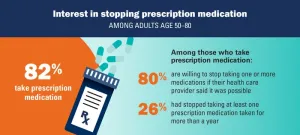(Press-News.org) In a first-of-its-kind effort, social media researchers from Drexel University, Vanderbilt University, Georgia Institute of Technology and Boston University are turning to young social media users to help build a machine learning program that can spot unwanted sexual advances on Instagram. Trained on data from more than 5 million direct messages — annotated and contributed by 150 adolescents who had experienced conversations that made them feel sexually uncomfortable or unsafe — the technology can quickly and accurately flag risky DMs.
The project, which was recently published by the Association for Computing Machinery in its Proceedings of the ACM on Human-Computer Interaction, is intended to address concerns that an increase of teens using social media, particularly during the pandemic, is contributing to rising trends of child sexual exploitation.
“In the year 2020 alone, the National Center for Missing and Exploited Children received more than 21.7 million reports of child sexual exploitation — which was a 97% increase over the year prior. This is a very real and terrifying problem,” said Afsaneh Razi, PhD, an assistant professor in Drexel’s College of Computing & Informatics, who was a leader of the research.
Social media companies are rolling out new technology that can flag and remove sexually exploitative images and helps users to more quickly report these illegal posts. But advocates are calling for greater protection for young users that could identify and curtail these risky interactions sooner.
The group’s efforts are part of a growing field of research looking at how machine learning and artificial intelligence be integrated into platforms to help keep young people safe on social media, while also ensuring their privacy. Its most recent project stands apart for its collection of a trove of private direct messages from young users, which the team used to train a machine learning-based program that is 89% accurate at detecting sexually unsafe conversations among teens on Instagram.
“Most of the research in this area uses public datasets which are not representative of real-word interactions that happen in private,” Razi said. “Research has shown that machine learning models based on the perspectives of those who experienced the risks, such as cyberbullying, provide higher performance in terms of recall. So, it is important to include the experiences of victims when trying to detect the risks.”
Each of the 150 participants — who range in age from 13- to 21-years-old — had used Instagram for at least three months between the ages of 13 and 17, exchanged direct messages with at least 15 people during that time, and had at least two direct messages that made them or someone else feel uncomfortable or unsafe. They contributed their Instagram data — more than 15,000 private conversations — through a secure online portal designed by the team. And were then asked to review their messages and label each conversation, as “safe” or “unsafe,” according to how it made them feel.
“Collecting this dataset was very challenging due to sensitivity of the topic and because the data is being contributed by minors in some cases,” Razi said. “Because of this, we drastically increased the precautions we took to preserve confidentiality and privacy of the participants and to ensure that the data collection met high legal and ethical standards, including reporting child abuse and the possibility of uploads of potentially illegal artifacts, such as child abuse material.”
The participants flagged 326 conversations as unsafe and, in each case, they were asked to identify what type of risk it presented — nudity/porn, sexual messages, harassment, hate speech, violence/threat, sale or promotion of illegal activities, or self-injury — and the level of risk they felt — either high, medium or low.
This level of user-generated assessment provided valuable guidance when it came to preparing the machine learning programs. Razi noted that most social media interaction datasets are collected from publicly available conversations, which are much different than those held in private. And they are typically labeled by people who were not involved with the conversation, so it can be difficult for them to accurately assess the level of risk the participants felt.
“With self-reported labels from participants, we not only detect sexual predators but also assessed the survivors’ perspectives of the sexual risk experience,” the authors wrote. “This is a significantly different goal than attempting to identify sexual predators. Built upon this real-user dataset and labels, this paper also incorporates human-centered features in developing an automated sexual risk detection system.”
Specific combinations of conversation and message features were used as the input of the machine learning models. These included contextual features, like age, gender and relationship of the participants; linguistic features, such as wordcount, the focus of questions, or topics of the conversation; whether it was positive, negative or neutral; how often certain terms were used; and whether or not a set of 98 pre-identified sexual-related words were used.
This allowed the machine learning programs to designate a set of attributes of risky conversations, and thanks to the participant’s assessments of their own conversations, the program could also rank the relative level of risk.
The team put its model to the test against a large set of public sample conversations created specifically for sexual predation risk-detection research. The best performance came from its “Random Forest” classifier program, which can rapidly assign features to sample conversations and compare them to known sets that have reached a risk threshold. The classifier accurately identified 92% of unsafe sexual conversations from the set. It was also 84% accurate at flagging individual risky messages.
By incorporating its user-labeled risk assessment training, the models were also able to tease out the most relevant characteristics for identifying an unsafe conversation. Contextual features, such as age, gender and relationship type, as well as linguistic inquiry and wordcount contributed the most to identifying conversations that made young users feel unsafe, they wrote.
This means that a program like this could be used to automatically warn users, in real-time, when a conversation has become problematic, as well as to collect data after the fact. Both of these applications could be tremendously helpful in risk prevention and the prosecution of crimes, but the authors caution that their integration into social media platforms must preserve the trust and privacy of the users.
“Social service providers find value in the potential use of AI as an early detection system for risks, because they currently rely heavily on youth self-reports after a formal investigation had occurred,” Razi said. “But these methods must be implemented in a privacy-preserving matter to not harm the trust and relationship of the teens with adults. Many parental monitoring apps are privacy invasive since they share most of the teen's information with parents, and these machine learning detection systems can help with minimal sharing of information and guidelines to resources when it is needed.”
They suggest that if the program is deployed as a real-time intervention, then young users should be provided with a suggestion — rather than an alert or automatic report — and they should be able to provide feedback to the model and make the final decision.
While the groundbreaking nature of its training data makes this work a valuable contribution to the field of computational risk detection and adolescent online safety research, the team notes that it could be improved by expanding the size of the sample and looking at users of different social media platforms. The training annotations for the machine learning models could also be revised to allow outside experts to rate the risk of each conversation.
The group plans to continue its work and to further refine its risk detection models. It has also created an open-source community to safely share the data with other researchers in the field — recognizing how important it could be for the protection of this vulnerable population of social media users.
“The core contribution of this work is that our findings are grounded in the voices of youth who experienced online sexual risks and were brave enough to share these experiences with us,” they wrote. “To the best of our knowledge, this is the first work that analyzes machine learning approaches on private social media conversations of youth to detect unsafe sexual conversations.”
END
Sliding out of my DMs: young social media users help train machine learning program to flag unsafe sexual conversations on Instagram
2023-04-24
ELSE PRESS RELEASES FROM THIS DATE:
Study points to cause of safety concerns in widely used painkiller diclofenac
2023-04-24
SPOKANE, Wash.—Safety concerns related to the widely used painkiller diclofenac may be tied to a little-studied drug-metabolizing enzyme whose expression can vary as much as 3,000 times from one individual to the next, according to new research.
Published in the journal Clinical Pharmacology & Therapeutics, findings from the study could be used to develop ways to identify individuals at risk of serious side effects from diclofenac and to determine safer dosing standards for specific populations, including women, young children and people of certain ethnicities.
Used to combat pain and inflammation ...
Cryo-imaging lifts the lid on fuel cell catalyst layers
2023-04-24
Proton-exchange membrane fuel cells (PEMFC), which are being developed for use in electric vehicles, rely on nanoparticles called catalysts to trigger electricity-producing reactions between hydrogen and oxygen. Most PEMFC catalysts contain platinum – a scarce and precious metal. There is therefore a pressing global need to develop catalysts that can generate the most power while minimizing platinum content.
Manufacturers integrate these catalysts in complex assemblies called catalyst layers. Until now, they had to do so without a detailed picture of the resulting structure, as traditional imaging processes almost always cause some degree of damage. Vasiliki Tileli, head ...
Study finds significant variation in anatomy of human guts
2023-04-24
New research finds there is significant variation in the anatomy of the human digestive system, with pronounced differences possible between healthy individuals. The finding has implications for understanding the role that the digestive tract’s anatomy can play in affecting human health, as well as providing potential insights into medical diagnoses and the microbial ecosystem of the gut.
“There was research more than a century ago that found variability in the relative lengths of human intestines, but this area has largely been ignored since then,” says Amanda Hale, co-first author of the study and a Ph.D. ...
As “deprescribing” medicines for older adults catches on, poll shows need for patient-provider dialogue
2023-04-24
As the movement toward “deprescribing” medications among older adults grows, a new poll shows strong interest in this idea.
A full 80% of adults aged 50 to 80 would be open to stopping one or more of the prescription medicines they’ve been taking for more than a year, if a health care provider said it was possible. Already, 26% said they have done so in the past two years.
Of those willing to stop a medicine, 67% said they would likely ask for advice about doing so at their next visit with a provider, according to the new ...
If it pays to be a jerk, why isn’t everyone that way?
2023-04-24
DURHAM, N.C. -- Throw a tantrum. Threaten, shove aside or steal from your colleagues. Science confirms, yet again, that brutish behavior can be an effective path to power. And not just in humans, but in chimpanzees, too.
A new study appearing April 24 in the journal PeerJ Life and Environment found that male chimps with more bullying, greedy and irritable personalities reached higher rungs of the social ladder and were more successful at siring offspring than their more deferential and conscientious counterparts.
But if that’s the case, researchers ask, why isn’t every chimp a bully?
A team led by researchers at the ...
New neurosurgery research: Surgical versus nonsurgical treatment of pituitary apoplexy
2023-04-24
The first prospective study comparing outcomes in patients with pituitary apoplexy—sudden bleeding or death of a pituitary tumor—found that patients managed medically fared as well as those treated surgically in the majority of cases. The multicenter international study, led by Cedars-Sinai investigators, was presented today at the American Association of Neurological Surgeons Scientific Meeting in Los Angeles.
“This is the best data to date on the question of surgery versus medical management in patients with this rare but serious condition,” said Adam Mamelak, MD, co-director ...
AAAS announces winners of the inaugural Mani L. Bhaumik Breakthrough of the Year Award
2023-04-24
The American Association for the Advancement of Science’s (AAAS) inaugural Mani L. Bhaumik Breakthrough of the Year Award — focused on standout contributors to NASA’s James Webb Space Telescope (JWST) — honors three individuals who supported vast swaths of the JWST community over decades and whose persistence amid multiple setbacks ensured the mission’s completion.
The award recognizes Major General Charles Frank Bolden Jr., USMC (Ret), a former administrator of the National Aeronautics and Space Administration (NASA); John Mather, senior project scientist of the JWST since 1995; and Bill Ochs, JWST project manager from 2011 through the telescope’s ...
Do vitamin D levels affect the body’s response to anti-cancer immunotherapy?
2023-04-24
Study’s findings suggest that maintaining normal vitamin D levels may benefit patients.
New research indicates that for patients with advanced skin cancer, it may be important to maintain normal vitamin D levels when receiving immunotherapy medications called immune checkpoint inhibitors. The findings are published by Wiley online in CANCER, a peer-reviewed journal of the American Cancer Society.
Vitamin D has many effects on the body, including regulation of the immune system. To see whether levels of vitamin D might impact the effectiveness of immune checkpoint inhibitors, investigators analyzed the blood of 200 patients with advanced melanoma both before and every 12 weeks ...
Drug combination restores ability of leading treatment to signal for death of blood cancer cells
2023-04-24
Despite the promise of new medications that promote cancer cell death in people with acute myeloid leukemia, leukemic cells often adopt features that let them evade the drugs’ effects within a year.
Now, new research using human tissue samples and mouse models has found that resistance of leukemia cells to a widely prescribed drug called venetoclax occurs because of a rapid increase in the breakdown and turnover of mitochondria, structures inside the cell that help power its functions. In addition to their role in producing energy, mitochondria also tell cells to die under certain adverse conditions.
This process of “programmed cell ...
Increased risk of testicular cancer in people with neurodevelopmental disorders
2023-04-24
A new study by researchers at Uppsala University and Uppsala University Hospital shows that men who have a neurodevelopmental disorder, such as autism and ADHD, also have a slightly increased risk of testicular cancer, or seminoma. This is the first study to show such a link, with the results to be published in the British Journal of Cancer.
Testicular cancer is the most common form of cancer in young men, and its underlying causes are still largely unknown.
“As testicular cancer can be surgically removed, thus curing the disease, it is important to seek care in time if you feel a lump in your testicle,” notes Ingrid ...




